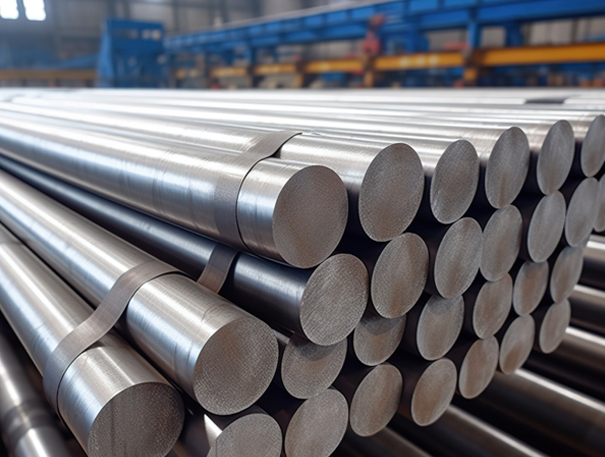A black bar is a type of stainless steel bar that has been coated with black oxide. The black oxide coating gives the bar a black colour and enhances its corrosion resistance.

420 stainless steel can be used in a variety of applications because it is corrosion-resistant, hard, and cost-effective. The term “black bar” is often used to describe the finish or treatment on the surface of stainless steel bars.
In stainless steel terminology, a black bar refers to a layer of black oxide on the surface of a steel bar. This can be achieved by chemical processes or by heat treatment. The black oxide layer on stainless steel bars serves several purposes. It can improve the look and feel of the steel. It can also increase corrosion resistance and improve wear resistance.
420 stainless steel black bars are commonly used in applications where high strength and hardness are required, such as:
416 Stainless Steel is a form of stainless steel that has been enriched with added sulfur, making it more suitable for machining. In stainless steel, the term black bar generally refers to the finish or treatment applied to the surface of the steel bar.
A 416 stainless steel black bar would be a bar that has a black oxide layer or a blackened finish applied to its surface. There are several ways to produce this blackening, including heat treatment and chemical procedures. The black oxide coating serves numerous functions, including improving the appearance of the steel, increasing corrosion resistance, and improving wear resistance.
The characteristics and properties of a black bar made of 416 stainless steel will vary depending on the type of stainless steel used, as well as the type of blackening process employed. Although this steel is renowned for its machining capabilities and is frequently used in applications that necessitate good machining characteristics, it is less corrosion-resistant than other grades of stainless steel, such as 316 and 304. Consequently, the presence of a black oxide layer may provide additional corrosion resistance for certain applications. Generally, this steel is used in the production of components and parts for a variety of applications, including firearms and valves, as well as various machined components.
416 stainless steel black bars are commonly used in applications where good machinability and corrosion resistance are required, such as:
The two main types of stainless steel are 420 and 416, and the main difference between them is the carbon content. While the higher carbon content of 420 stainless steel increases its strength and hardness, it also reduces its machinability, making it less suitable for applications requiring complex machining. On the other hand, the lower carbon content of 416 stainless steel makes it easier to machine, making it a more suitable choice for applications that require complex machining. Both 420 and 416 stainless steels are martensitic, meaning that they are capable of being hardened by heat treatment, and both have a higher maximum hardness.
420 Stainless Steel: It has a chromium content of approximately 13-14%, which is the main alloying element that makes it corrosion-resistant. It also has a carbon content of at least 0.15% and a manganese content of up to 1%.
416 Stainless Steel: This product has a slightly lower concentration of chromium, usually ranging from 12% to 13%, and a higher concentration of sulfur, ranging from 0.15% to 0.35%.
420 Stainless Steel: It has good corrosion resistance, especially in a hard and even-tempered state. It can be used in a variety of applications, but it may not have the same corrosion resistance as some other grades of stainless steel.
416 Stainless Steel: The corrosion resistance of this material is generally lower than that of 420 stainless steel. This is mainly due to its higher sulfur content. Therefore, it should not be used in applications that are exposed to high levels of corrosion without proper maintenance.
420 Stainless Steel: It is capable of being hardened and tempered in order to attain a high degree of hardness. This material is frequently employed in applications that necessitate a high level of durability, such as cutlery and surgical tools.
416 Stainless Steel: It can also be hardened but is typically not as hard as 420 stainless steel. It is commonly used in applications where machinability and moderate hardness are more critical than extreme hardness.
Stainless steels 420 and 416 differ in composition, characteristics, and applications. The main distinction is that grade 416 has extra components such as sulfur-phosphorus, which improves its machinability over stainless steel 420. This makes it perfect for high-precision production applications such as automotive components.
Send your enquiry to
sales@parthsteel.com